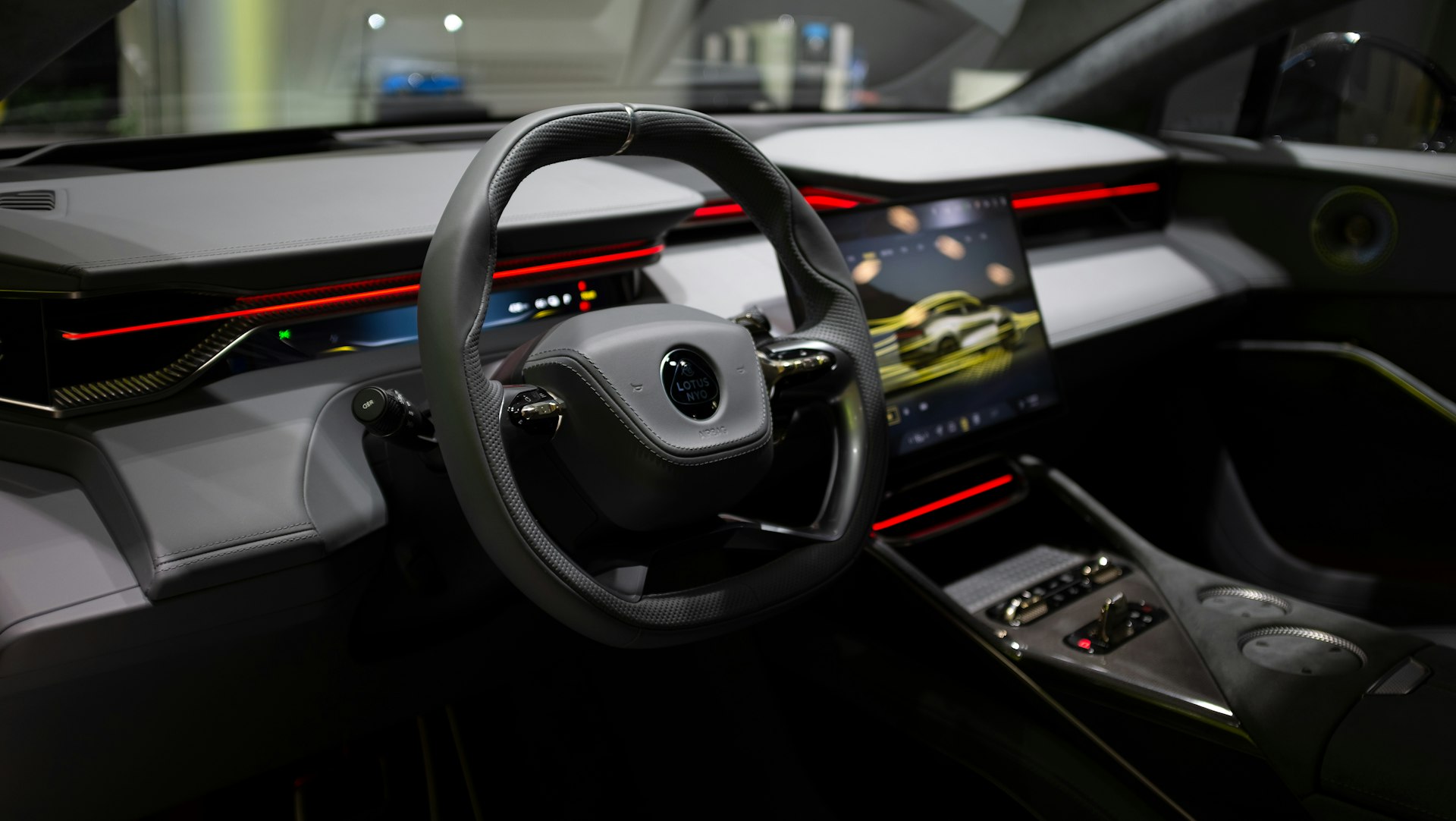Driving the Future: Innovations in Automotive Human-Machine Interfaces for 2025

Photo by Forest Plum on Unsplash
Introduction: The New Era of Automotive Human-Machine Interfaces
The automotive industry is undergoing a radical transformation as vehicles evolve from mechanical machines into sophisticated digital platforms. Human-Machine Interface (HMI) innovations are at the heart of this shift, reshaping how drivers and passengers interact with their vehicles. In 2025, HMIs are more than dashboards-they’re intelligent, adaptive systems that enhance safety, comfort, and personalization [1] .
Voice Recognition: The Rise of Conversational Interfaces
Voice recognition technology is rapidly becoming a cornerstone of in-car interaction. Modern voice assistants, powered by advanced Natural Language Processing (NLP), allow drivers to control navigation, climate, entertainment, and even external smart home devices without taking their hands off the wheel. These systems, such as Amazon Alexa and Google Assistant, are continually improving to understand context, dialects, and user intent [1] .
To access these features, consumers can:
- Choose vehicles equipped with built-in voice assistant integration.
- Regularly update vehicle software, either via dealer service or over-the-air updates, to benefit from the latest NLP improvements.
- Connect voice assistants with smart home devices through the manufacturer’s official app, following in-app instructions for linking accounts.
Challenges include background noise and language nuances, but manufacturers are investing in noise-cancelling microphones and contextual learning to address these issues. For vehicles lacking built-in systems, aftermarket solutions may be available through electronics retailers or automotive accessory providers.
Augmented Reality (AR) Displays and Head-Up Displays (HUDs)
Augmented Reality is revolutionizing the driving experience by projecting vital information-like speed, navigation, and hazard alerts-directly onto the windshield. This technology minimizes distraction, allowing drivers to keep their eyes on the road [2] . Head-Up Displays (HUDs) are expected to witness the fastest growth in the coming years [4] .
Implementation steps:
- When purchasing a new vehicle, inquire about AR HUD features in the specification sheet.
- For existing vehicles, consult with your dealership or certified installers about retrofit HUD kits.
- Follow manufacturer guidelines to calibrate AR displays for optimal visibility and accuracy.
Not all vehicles support AR HUDs natively, so consumers should verify compatibility before investing. For further details, visit official manufacturer websites or speak with authorized dealerships.
AI-Driven Personalization and Predictive Interfaces
Artificial Intelligence enables vehicles to learn from users’ behaviors, preferences, and routines, delivering personalized settings for seat position, climate, and entertainment. Predictive, context-aware interfaces use machine learning to anticipate driver needs, such as suggesting preferred routes or automatically adjusting cabin conditions based on historical patterns [3] .
To leverage AI-driven personalization:
- Set up user profiles through the vehicle’s infotainment system or companion app.
- Allow the system to collect usage data, typically managed through privacy settings in the vehicle’s software menu.
- Sync your vehicle with cloud accounts for enhanced personalization across devices and services.
Potential challenges include privacy concerns and data security. Users should review privacy policies and configure data-sharing preferences according to their comfort level.
Haptic Feedback and Gesture Recognition
Haptic feedback interfaces provide tactile responses when users interact with controls, improving confidence and reducing the need to look away from the road. Gesture recognition systems enable drivers to manage functions with simple hand movements, streamlining interaction in situations where touch or voice commands may be less effective [2] .
For practical implementation:
- Review your vehicle owner’s manual or infotainment guide for supported haptic and gesture controls.
- Practice common gestures in a stationary vehicle before using them on the road.
- Adjust sensitivity settings as needed through system menus.
Manufacturers continue to refine these systems for greater accuracy and reliability. If your vehicle does not support these features, explore aftermarket steering wheel controls and infotainment upgrades, ensuring compatibility with your make and model.

Photo by milan degraeve on Unsplash
Biometric Authentication and Personalized User Profiles
Biometric technologies, such as fingerprint scanners and facial recognition, are enhancing security and user personalization. By authenticating drivers and passengers, vehicles can tailor settings and restrict access to sensitive features, such as payment systems or advanced navigation [3] .
To set up biometric authentication:
- Follow step-by-step instructions in the vehicle’s settings menu to enroll fingerprints or facial data.
- Consult manufacturer documentation for troubleshooting and privacy options.
- For multi-user households, create separate profiles for each driver to maximize personalization.
Some vehicles may require dealer assistance or software updates for full biometric functionality. If unavailable, you can secure your vehicle using PIN codes or key fobs with encrypted chips.
HMI Innovations for Autonomous and Electric Vehicles
The rise of autonomous and electric vehicles introduces new HMI challenges and opportunities. Interfaces must facilitate clear communication during driver-vehicle handover, present real-time route and environment information, and manage emergency responses. Leading autonomous platforms, such as Waymo and Cruise, use voice commands and real-time data visualization to keep passengers informed and engaged [4] .
If you’re considering an autonomous or electric vehicle:
- Research available models and compare HMI systems through official manufacturer resources.
- Request a demonstration from dealerships to experience interface features firsthand.
- Stay updated on software improvements by subscribing to manufacturer newsletters or visiting their official websites.
Keep in mind that regulations and standards for autonomous HMIs are evolving. Users should follow guidance from the National Highway Traffic Safety Administration (NHTSA) and similar agencies for safe adoption.
Multimodal and Inclusive Interaction Design
Modern HMIs support multimodal interactions-combining visual, acoustic, and tactile inputs-to make driving more intuitive. Inclusive design practices ensure that systems accommodate diverse users, including those with physical or cognitive challenges. Driver Monitoring Systems (DMS) track attention and emotional states, adapting interfaces to reduce distraction and enhance comfort [3] .
To benefit from inclusive HMI design:
- Configure accessibility options in your vehicle’s settings, such as voice guidance or high-contrast displays.
- Test DMS features during vehicle setup to ensure they meet your safety and comfort needs.
- Consult with your dealer or manufacturer for personalized recommendations based on your requirements.
If your vehicle lacks certain inclusive features, aftermarket solutions-like adaptive controls and external monitoring devices-may be available through mobility specialists.
Emerging Technologies: Unreal Engine and Next-Gen Visualization
Automakers are increasingly using advanced graphics engines, such as Unreal Engine, to deliver photorealistic displays, immersive cockpit environments, and dynamic interface elements. At CES 2025, manufacturers showcased real-time rendering, customizable cabin themes, and integrated AR navigation powered by Unreal Engine [5] .
To explore these innovations:
- Visit official manufacturer or technology partner websites for feature demonstrations and compatibility guides.
- Participate in automotive technology events, such as CAR.HMI USA, to experience next-generation HMIs firsthand [3] .
- Monitor updates from leading automotive and software companies for new releases and pilot programs.
Not all vehicles support advanced visualization technologies today; however, the market is rapidly advancing, and future models are likely to offer increasingly immersive experiences.
Market Outlook and Steps for Adoption
The automotive HMI market, valued at USD 25.5 billion in 2024 and projected to grow at a CAGR of 10.6% through 2032, is set for robust expansion [4] . Drivers seeking to adopt these innovations should:
- Identify their priorities-safety, convenience, personalization-and select vehicles accordingly.
- Consult with manufacturers and dealerships for demonstrations and training.
- Stay informed about industry trends by visiting official industry event sites and following reputable technology publications.
- Consider aftermarket upgrades for older vehicles, ensuring compatibility and professional installation.
For regulatory updates and consumer safety information, refer to agencies such as NHTSA by searching for “automotive HMI safety standards” on their official website.
Conclusion: Navigating the Road Ahead
Automotive human-machine interface innovations are redefining the driving experience, making vehicles safer, smarter, and more tailored to individual needs. By understanding available technologies, implementation steps, and market trends, consumers and industry professionals can make informed decisions to harness the full potential of automotive HMIs in 2025 and beyond.
References
- [1] AutoEVTimes (2025). Top 7 Trends Driving the Automotive Human Machine Interface Market in 2025.
- [2] Vocal Media (2025). Automotive Human Machine Interface (HMI) Market: Leading Technologies in 2025.
- [3] Car HMI USA (2025). Integrated Automotive Interaction Design & Event Information.
- [4] Stratview Research (2025). Automotive Human Machine Interface Market Analysis.
- [5] Unreal Engine (2025). Automotive Innovation Powered by UE5 at CES 2025.
MORE FROM smartsavingsfinder.com













